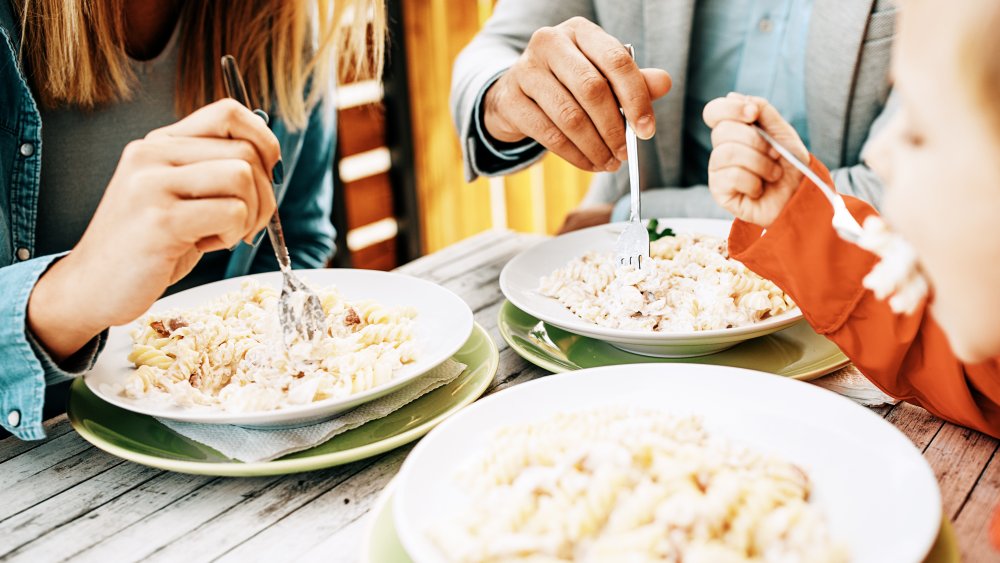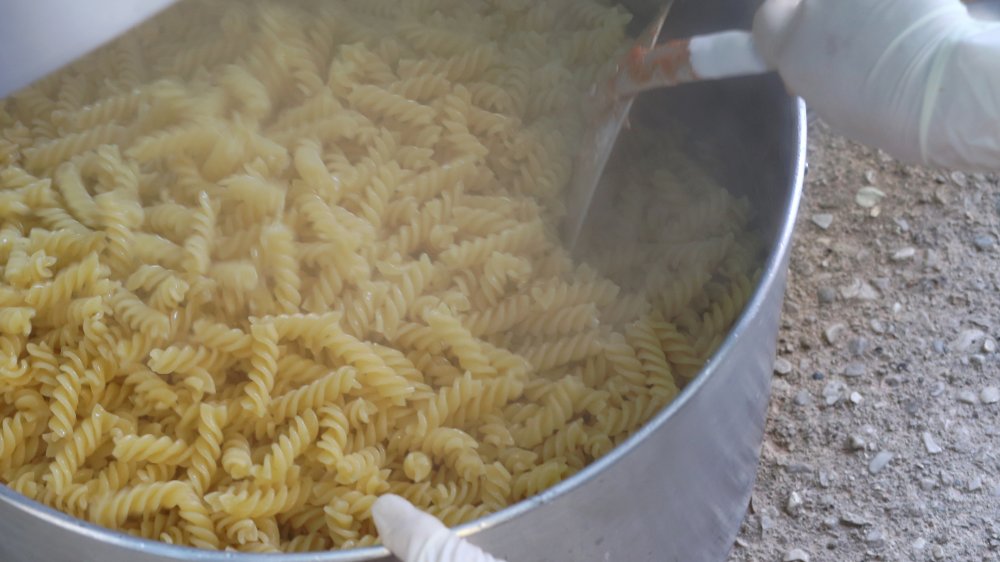Why You Should Absolutely Never Touch The Pasta At A Buffet
Hitting up the buffet can be a great way to eat to your heart's (or rather, stomach's) content without breaking the bank. However, not all buffet dishes are made equal. And as much as you'd love to heap a pile of pasta on your plate, here are a few reasons why you shouldn't.
First of all, you should choose your type of pasta wisely. We all know a buffet doesn't always have the healthiest options, but you it's wise to steer clear of any cream-based pastas such as fettuccine alfredo. Nutrition expert René Ficek, RD, told SheKnows, "Cream-based dishes are usually made with a combination of full-fat ingredients like mayonnaise, cream, butter, sour cream and cream cheese. These ingredients are jam-packed with saturated fat that increases cholesterol levels and damages the heart muscle." If you must have pasta on your buffet trip, then go for an option with red sauce instead.
But that's not the only health risk when it comes to eating pasta from a buffet. Pasta can actually become a breeding ground for dangerous bacteria. When you cook pasta (or anything grain-based) in water, the noodles expand as they soak up the water. But the problem is that bacteria love moist environments. Once pasta is cooked, it has the potential to develop into a hazardous food if it's not handled properly (via HuffPost Australia).
The pasta at a buffet has greater risk for this type of bacteria
When dry pasta is cooked in bulk before service at a restaurant starts and then stored away to reheat later, the noodles are at great risk for spreading bacillus cereus (via Restaurant Owner). According to a report published in the Journal of Food Science and Technology, this bacteria is a well-documented cause of food poisoning. It's particularly troublesome because it contains resistant endospores.
These spores can survive high cooking temperatures, so in order to stop bacillus cereus from spreading, cooked foods need to be served hot or cooled rapidly. According to HuffPost Australia, pasta should be kept cold below 41 degrees, or hot above 167 degrees; otherwise, they're in the "danger zone" for bacteria growth.
Once the pasta is cooked and drained, the best way to handle it is to spread it out into a sheet pan, which allows the noodles to cool down quickly, and then the pasta should be stored in a refrigerator or walk-in cooler. Instead, what commonly happens is that the noodles are moved into a storage container and covered with a lid. This prevents cooling from happening fast enough, thus leading to bacteria growth that flourishes at warm temperatures.
Convinced? For your own good, be sure to avoid the pasta the next time you dine out at a buffet restaurant!

